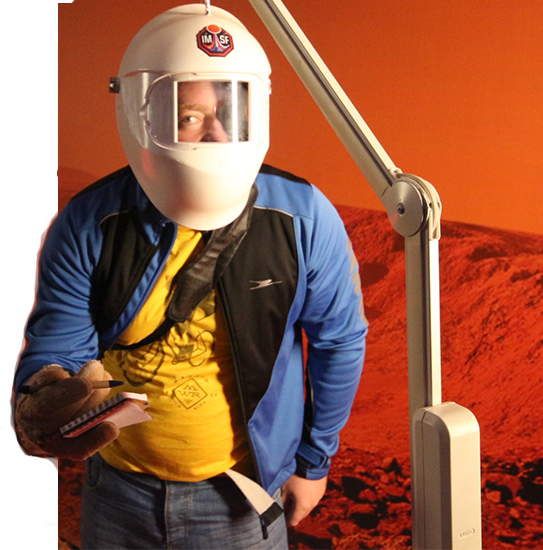Space, Worth the Wait
- Morgan Fagg
- Aug 6, 2019
- 3 min read
Penned as a follow up article on Mars for the Madrid Metropolitan
AFTER queueing for three hours to see National Geographic´s Marte event held recently in Colon, Madrid, a security guard explained between puffs of smoke that the event was closing. Three hours queueing with men and women who had young children with them and elderly people queuing with considerable difficulty with their crutches and walking sticks.
Colon, named after The New World´s most famous explorer had a mile long queue waiting for the National Geographic event which disappointedly closed with many waiting to peek inside the space dome.

Three hours for nothing suddenly turned into three hours for an event that was quite literally out of this world as a tour guide called Emma took the time to apologise in English for the communication error, the long wait and even encouraged a return visit.
Returning on Sunday morning, you could see mission control as you entered the event and a caravan that had been converted to resemble a habitation in space. The virtual reality experience people had been queuing to use and a mock-up of the red planet´s Martian soil with a giant National Geographic flag on top.
Mars is finally on the menu but queuing for it shouldn't be rocket science. The reason for the delay was down to the extraordinary interest in the event and the time each person was spending inside Colon´s space base. Man last set foot on the Moon in 1972 and it has almost been half a century since Neil Armstrong took one giant leap for mankind.
Over the Summer, The Madrid Metropolitan interviewed one of Mars One´s candidates for our launch edition. In September Space X made announcements about reaching Mars and then in October Obama spoke about NASA making it to Mars which has let into National Geographic´s November edition dedicated to the red planet.
Inside the tented exhibition, people queued to try the VR experience and to enter the space habitation while the tent´s canopy projected images overhead of National Geographic´s new series about Mars.

Our host was Fabricio Braudi, an Italian science fiction director himself, who demonstrated the VR headsets which seemed to show a virtual SpaceX Dragon2 capsule.
The technology exists in several ways and it is just a matter of shaping the space puzzle and committing to the next big step for mankind and the original rocketeers must look like cavemen compared to the rapid advances we have made in technology. Look at the difference in a telephone from 1969 and compare it with the latest fingerprint recognising smartphone. Phones that let you communicate with Skype, FaceTime and iMessage. Phones that have GPS, e-mail, maps, cameras, video cameras and even a telephone. You can bank online with your phone, blog and follow the stars with some apps and dating and train times are at the touch of a finger.

Imagine the difference in even a bicycle from the Summer of 69 and one from today.
In 1969 your father didn't have a phone holder on his bicycle for a start. No cycling computer told him how many miles he had travelled and no suspension absorbed the smoother roads that we have today. Mountain bikes came out around the same time as mobile phones and today we have electric bikes to take you further and faster than ever before.
People´s appetite for Mars can be seen from the many Madrileños queueing in the bitter cold to see inside the exhibition space. The time they spent inside the fantastic futuristic exhibition and their reluctance to leave. Mars is finally on the menu so pick up the phone and call NASA and tell them to get on their bike.
We are going to Mars.
Thank you National Geographic for a worthwhile wait and thank you, Emma and Fabian.






Comments